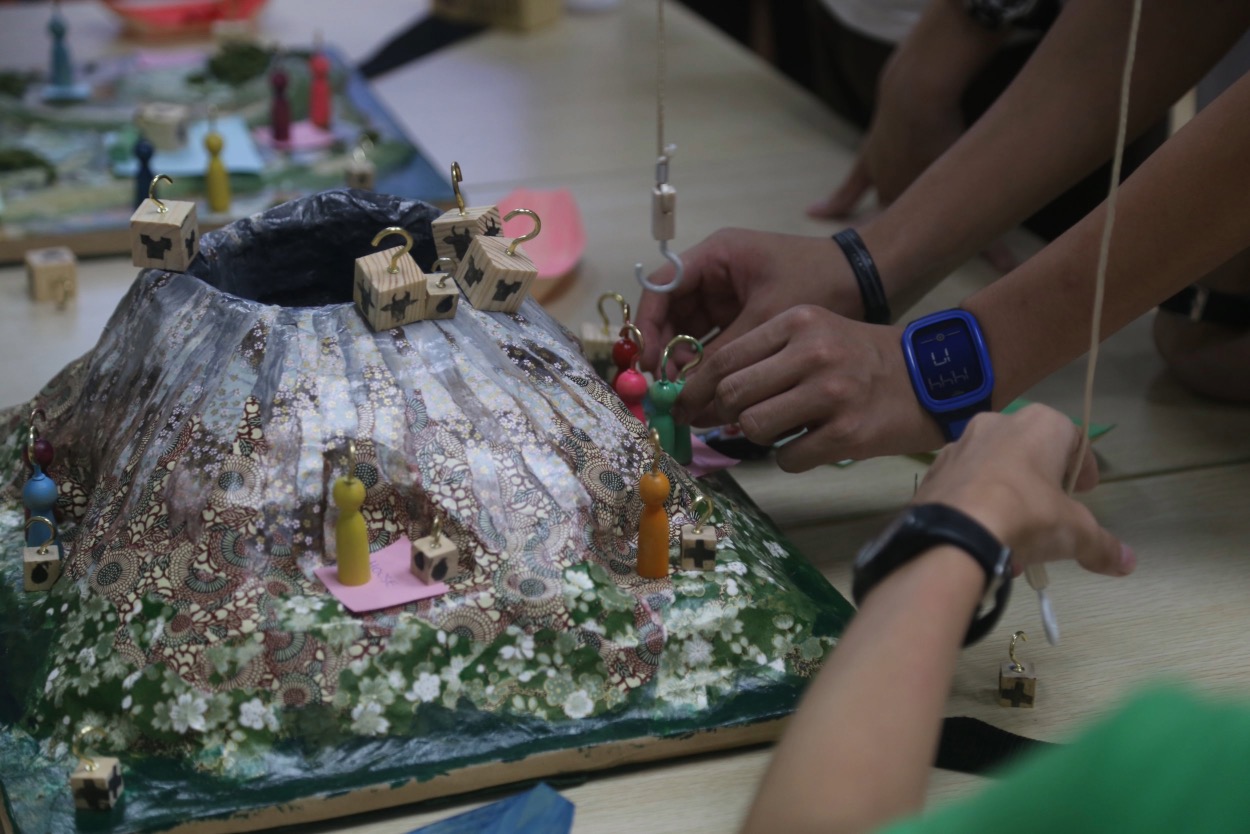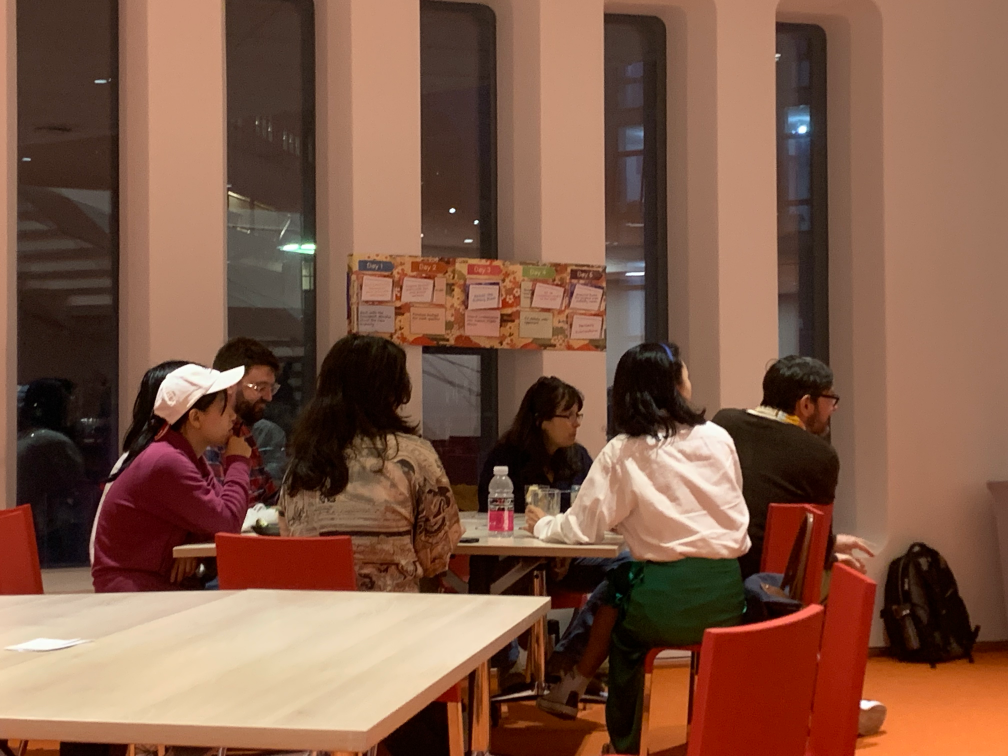How gaming can fight climate change
Games that model the future can inspire hope and encourage creative minds to redefine solutions.
Jenaye Johnson • January 26, 2024

Games can mimic the current world, look to the past, bring fictional universes to life and perhaps evoke a personal desire to think bigger about fixing global problems, designers say. [Credit: Boho Interactive]
A typhoon is on the horizon and approaching fast. There are only four days left to evacuate your village. But several problems block off safety for you and your neighbors: no car, lack of internet, language barriers, financial instability and elders to take care of. The local government has limited funds to help your village and few of those issues can be solved before the storm hits.
What do you all do? Work together, or save yourselves? And how can you be sure the solution you choose is right?
Luckily you don’t have to stress too much: These dire circumstances you’re embedded in right now are part of a board game known as Evacuation Bingo. Your family and neighbors? They’re non-playable characters, added to this fictional game world to reconstruct how natural disasters that plague the Pacific and Indian Oceans raise the stakes and force communities to make life-or-death decisions in the face of climate danger.
Regardless, it’s a tricky problem, one that requires teamwork and creativity — and even some bravery. Those traits also happen to be the same ones that we will all need to cope with the onrushing impacts of global climate change. That’s no coincidence.
Roleplaying games can help spawn effective responses to global climate problems that otherwise sound so overwhelming they paralyze us, said David Finnigan, an Australian theatrical game developer who devised Evacuation Bingo alongside the company Boho Interactive.
Dennis Morgan of the Harlem CoLAB has the same goal, though he takes a more digitized approach to game design by capitalizing on school kids’ interests in gaming and technology. Gaming, he said, “provides us with an opportunity to think more about how we might create a more positive impact and change.”
The two game designers spoke at a recent interactive session hosted by the Columbia Climate Imaginations Network and the Columbia Climate School. Surrounded by calming lo-fi music and a bright orange carpet, a crowd of roughly 30 people listened intently as the panelists spoke.
It’s understandable that people tend to turn inward when facing an existential threat like climate change, with its surging seas, raging wildfires and unpredictable storms. But Finnegan and Morgan said people’s tendency to try to distract themselves by turning to their phones, computers and other virtual realities also represents an opportunity to build community and foster positive action. Games, in their opinion, can be much more than an absentminded pastime for those who prefer to fly solo in life.
Finnigan explained that he became interested in the problem of climate change and how participatory models — where the stakeholders both come up with the problem and brainstorm solutions together — could help. “We started thinking, what can we do that bridges the gap between what [scientists] do and what we do?” he asked.
Scientists who understand the nitty-gritty of climate change effects aren’t the best communicators, “but that’s what we do, we’re artists,” Finnegan said. He wanted to use his unique skill set to make climate modeling playful, interactive and easy for the audience to digest.
That’s what Morgan wants, too. “I really want to tap into the creative element,” he said. “Allowing people to create, to use technology and make something that allows you to tell so many different stories.”
The designers brought five games for the audience to toy with at the panel event. Three from Morgan were already commercialized board games currently available on the market: Coup, Monikers and Pictures. Though Morgan is also working on two new digital games behind the scenes, he brought board games because their physical presence makes it easy for everyone to engage with them together rather than individually.
Not to mention, the games he wrangled up were quirky, eye-catching and competitive enough to keep participants engaged.
Pictures and Moniker are not directly related to climate change, but Morgan stressed the importance of transferable everyday skills that could be reinforced by games. He noted that the point was to remind people that their backgrounds could all be useful when conceptualizing climate solutions, no matter how seemingly unrelated they were.

Puzzles meant to be played amongst a small group are just one of many methods to approach gaming spaces. [Credit: Jenaye Johnson]
Finnigan and Morgan are not the only people invested in adapting such unique methodologies to address climate solutions. In the past decade, many science-meets-gaming collaborations have sprung to life.
Solutions, a Canadian board game inspired by the way climate change affects both the environment and society, has suggested over 100 solutions that have the potential to turn into real, funded projects. Playing for the Planet organizes the annual Green Game Jams. These jams challenge gaming studios to implement what they call “green activations,” features that spotlight environmental challenges in the world into mobile games. Apps like Angry Birds Journey, Imagine Earth, Growtopia and Pac-Man all participated in the 2023 Jam to create campaigns within their games that raised awareness about wildlife and jungle ecosystems.
Angry Birds Journey added a feature to their gameplay called the “animal sanctuary.” Upon opening the app, players’ screens are filled with vibrant green plants and exotic animals that make their home in the Amazon Rainforest. Players were then incentivized to visit the Green Game Jams website and even contribute to wildlife conservation efforts.
Others, from NASA’s Climate Kids webpage to a Swedish research team developing computer-based decision games, educate by providing simple toolkits that break down complicated topics.
Games are often effective tools to ignite ideas and activism because they have rules, rewards, risk and loss — all characteristics that make them approachable and fun. Participants at the Columbia event mentioned how different it felt when they felt the stakes of losing.
“It’s giving people a chance to feel it, even in a low-stakes way. And I thought that was powerful,” said Sandra Goldmark, an assistant dean at the Columbia Climate School. She admired Finnigan and Morgan’s games because, she said, they “broke down complex topics in very accessible, organized ways.”
But games also have their limitations, especially if they are not targeted to reach specific communities with their own unique needs and interests. “How do you help groups of people with different priorities and circumstances?” Goldmark asked.
It’s a question that’s tough to answer. Both Morgan and Finnigan agreed that game models need to be customized to their audiences to succeed, including recognizing that communities have different levels of awareness and concern. It’s the main reason why Finnigan partners with specific organizations, like the Earth Observatory of Singapore, to design nuanced games constructed specifically to model natural hazards in Southeast Asia.
That’s how Evacuation Bingo was born. With this kind of participatory model, Finnigan and his team could work with local community members to understand what mattered most to them and suggest appropriate emergency responses for the government to consider.
In Morgan’s eyes, meaningful engagement with lasting effects is what comes first in this new space. It’s a way to unite thousands of voices. You don’t necessarily have to be tech-savvy. Everyone shares a love for finding solutions to obscure puzzles. If using that creative spark can work in games, why can’t it work for the world’s biggest problems?
The gaming road that uncovers the keys to climate solutions is not an easy one, but it’s a worthwhile challenge nonetheless. “Games take time. It’s what I struggle with as a designer,” Morgan said. “But we can all engage. And the really meaningful thing is to get people to go out there and do.”